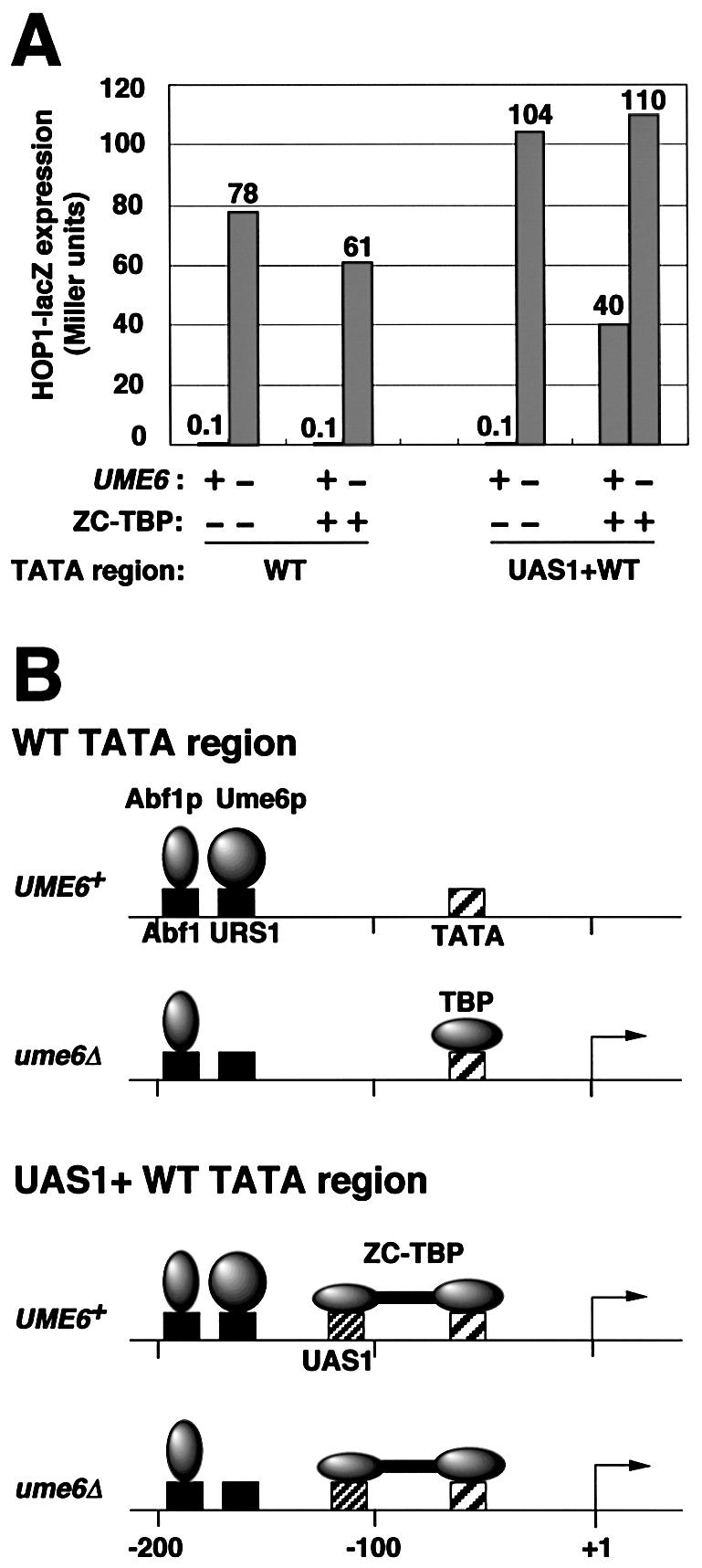Figure 4.

Effect of artificial recruitment of TBP on repression of the HOP1 promoter by Ume6p. (A) HOP1-lacZ expression in Miller units was measured in pAV79B (wild-type HOP1 promoter, referred to as WT TATA region) (20) and pKT5-1 [HOP1 promoter region in which –131 to –114 was replaced by the ZC binding site (CYC1 UAS1), referred to as UAS1+WT TATA region] in UME6 and ume6Δ strains with or without ZC-TBP expression. Strains used were AMP1780 (MATα hap1::LEU2), MHS22 (MATα hap1::LEU2 ume6Δ2), AMP1779 (MATα hap1::ZC-TBP-TRP1) and MHS21 (MATα hap1::ZC-TBP-TRP1 ume6Δ2). All strains lack Hap1p, the activator that binds to CYC1 UAS1. The standard deviations were <20% for the triplicate determinations. (B) Model for occupancy of Abf1p, TBP and ZC-TBP in wild-type HOP1 (WT TATA) and HOP1-UAS1 (UAS1+WT TATA) promoters. TBP binds to the derepressed wild-type HOP1 promoter, but does not bind to the repressed one. ZC-TBP, which is artificially recruited by ZC (zinc cluster DNA binding domain of Hap1p) to the CYC1 UAS1, binds to both repressed and derepressed HOP1-UAS1 promoter.
